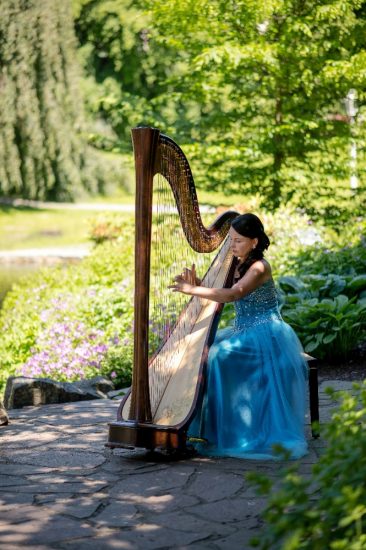
“Works of art make rules;
rules do not make works of art.”
Music therapy is an evidence-based clinical use of musical interventions to improve clients’ quality of life.
Music therapists use music and its many facets— physical, cognitive, emotional/psychological, social, aesthetic, and spiritual
to help clients improve their health in cognitive, motor, emotional, communicative, social, sensory, and educational
domains by using both active and receptive music experiences. These experiences include improvisation, re-creation, composition,
receptive methods, and discussion of music.Music transcends time and is present in all communities throughout the world.
Given the universal nature of music, music therapy is uniquely able to reach individuals across all backgrounds and ages.
It does not require any previous knowledge for individuals to meet their goals and be successful. Music therapy provides individualized
treatments to help treat individuals with disabilities, injuries, illnesses or to improve their well being.

Harp tones alleviate fear and stimulate ontogenetically and phylogenetically the oldest brain structures, so they can awaken and release primordial impulses and creative instincts that lead to new and more optimal way of behavior.
The harpist Katarína Ševčíková places great emphasis in her play on evoking a feeling of magic, fairy tale, well-being, relaxation and harmony. That’s why in her repertoire you can find works from classical music of different periods, but also music of other genres (pop, folk, jazz) through oriental Irish or Scotish music.
Some common music therapy practices include developmental work (communication, motor skills, etc.) with individuals with
special needs, songwriting and listening in reminiscence, orientation work with the elderly, processing and
relaxation work, and rhythmic entrainment for physical rehabilitation in stroke victims. Music therapy is used in some
medical hospitals, cancer centers, schools, alcohol and drug recovery programs, psychiatric hospitals, and correctional facilities.
There is a wide qualitative and quantitative research literature base for music therapy. Music therapy is distinctive
from Musopathy, which relies on a more generic and non-cultural approach based on neural, physical,
and other responses to the fundamental aspects of sound.According to Dr. Daniel Levitin, “Singing and instrumental activities
might have helped our species to refine motor skills, paving the way for the development of the exquisitely
fine muscle control required for vocal or signed speech.
Harp therapy is a general term used to describe the continuum of types of therapies
in which the harp is used. The harp, with its soothing timbre and spiritual
associations, has been revered as a healing instrument by many
cultures for thousands of years.
Harp therapy may be provided at home or in a clinical setting. The setting largely
dictates what size harp can be used, however a variety of sizes of harps
may be used to provide therapeutic harp music. When therapeutic harp music
is played, recipients may receive beneficial effects such as increased relaxation,
improvement in sleep, decreased pain and anxiety, stabilization of vital signs,
and improvement in mood. An end-of-life music vigil can also help
a patient to achieve a peaceful transition. Some harpists, trained in other
therapeutic disciplines such as psychology, music therapy and occupational therapy,
use the harp in their practices to elicit specific cognitive or behavioral changes.
In addition, a harpist might teach an individual to play the harp to assist
in pain reduction, to help to overcome physical, mental and emotional challenges,
to create a sense of community in a group setting,
and to provide physical rehabilitation.


Evidence suggests that music therapy is beneficial for all individuals, both
physically and mentally. Benefits of music therapy include improved heart rate,
reduced anxiety, stimulation of the brain, and improved learning.
Music therapists use their techniques to help their patients in many areas,
ranging from stress relief before and after surgeries to neuropathologies
such as Alzheimer’s disease. One study found that children who listened to music
while having an IV inserted into their arms showed less distress and felt less
pain than the children who did not listen to music while having an IV inserted.
Studies on patients diagnosed with mental disorders such as anxiety,
depression, and schizophrenia have shown a visible improvement in
their mental health after music therapy.



